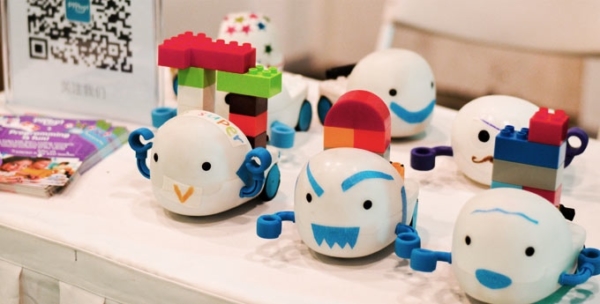The idea of teaching young children about the nuances of programming logic is quickly becoming more commonly accepted. Doing so benefits all types of skills, from visualization to problem solving, and help children confront the challenges of a rapidly developing world.
The Plobot is another in a long line of completely physical programming toys created to help children explore the world of progamming world in a very tactile way. Created by NYU robotics professor Rudi Cossovich and ex-Google engineer Sean Purser-Haskell, does away with syntax and computer screens while still educating children about algorithms, loops, conditionals, and more. Command cards are core to the Plobot experience, with each representing a block of code. Kids can tap or swipe them on Plobot’s head to string them together and create a program the robot follows, with the play card serving as an execute function.
The Plobot’s base set of command cards is the foundation for controlling Plobot, while expansion sets let children experiment far more. This combines with stations, or small circular mats, to give the Plobot goals to travel to. Plobot can store up to 50 sequences for an impressive number of combinations. $79 gets backers a Plobot plus the base set of command cards, while $109 gets everything included in the base perk plus the expansion set of command cards. The Plobot is slated to ship in March 2017 should it raise $35,000 by November 24th, 2016.
The Plobot is an impressive product that makes physical the abstract world of programming. It has the potential for an overwhelming amount of possibility without the need for anything a traditional classroom would need, i.e. computers, greatly benefitting the still developing mind. The Montessori-inspired Cubetto is a bit simpler in its scope, but doesn’t require reading skills to use, giving it a leg up for even younger children. For a little more of a challenge post-Plobot, take a look at the Codie to get into some slightly more advanced, but still early, robotics concepts.
